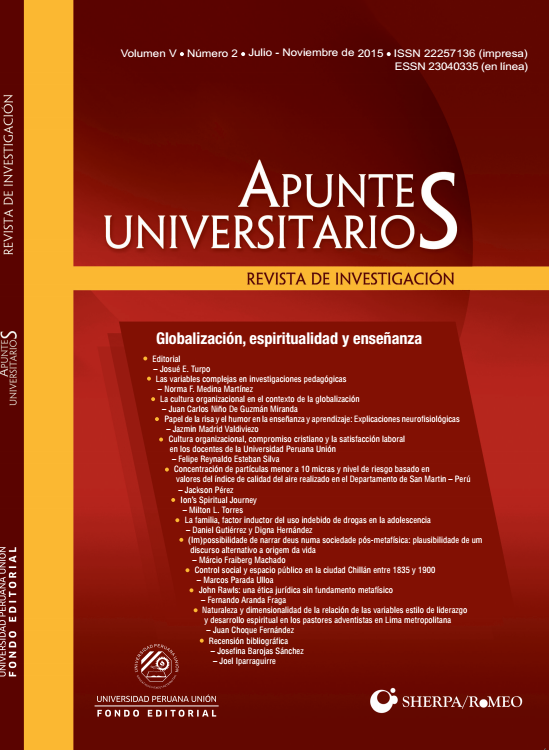Papel de la risa y el humor en la enseñanza y aprendizaje: Explicaciones neurofisiológicas - The role of laughter and humor in teaching and learning: neurophysiological explanations
DOI:
https://doi.org/10.17162/au.v0i2.240Palabras clave:
Neurofisiología de la risa, humor, enseñanza, aprendizajeResumen
En esta revisión se recoge información acerca del uso de la risa y el humor en el proceso de enseñanza-aprendizaje de los estudiantes en el contexto del aula y bajo el enfoque de las neurociencias. Se definen los conceptos de risa y humor, se dan explicaciones neurofisiológicas, se identifican las principales teorías y finalmente, se revisan investigaciones sobre el uso de la risa y el humor en el aula. También se incluyen reflexiones que atribuyen una influencia positiva al uso del humor en los procesos de enseñanza–aprendizaje, por cuanto transforman aspectos afectivos, sociales y cognitivos. Sin embargo, se concluye con que la inserción de la risa y humor en al aula requiere de investigaciones empíricas que partan de un enfoque neuropedagógico, pues estos análisis enriquecidos por las neurociencias les dan a los docentes confiabilidad en sus beneficios para la enseñanza y aprendizaje.
Descargas
Descargas
Publicado
Número
Sección
Licencia
1. Política propuesta para revistas de acceso abierto
Los autores/as que publiquen en esta revista aceptan las siguientes condiciones:
- Los autores/as conservan los derechos de autor y ceden a la revista el derecho de la primera publicación, con el trabajo registrado con la licencia de atribución de Creative Commons, que permite a terceros utilizar lo publicado siempre que mencionen la autoría del trabajo y a la primera publicación en esta revista.
- Los autores/as pueden realizar otros acuerdos contractuales independientes y adicionales para la distribución no exclusiva de la versión del artículo publicado en esta revista (p. ej., incluirlo en un repositorio institucional o publicarlo en un libro) siempre que indiquen claramente que el trabajo se publicó por primera vez en esta revista.
- Se permite y recomienda a los autores/as a publicar su trabajo en Internet (por ejemplo en páginas institucionales o personales) antes y durante el proceso de revisión y publicación, ya que puede conducir a intercambios productivos y a una mayor y más rápida difusión del trabajo publicado (veaThe Effect of Open Access).





